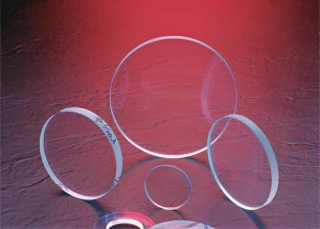Optical Mirrors
Frequently Asked Questions
What are the different types of optical mirrors?
There are several types of optical mirrors available, including concave mirrors, convex mirrors, plane mirrors, and specialty mirrors like laser mirrors and dichroic mirrors. Each type of mirror is designed to reflect light in a specific way and is suited for different applications.
Can I get a custom optical mirror?
Yes, many of our suppliers and manufacturers offer custom optical mirrors. You can specify the type of mirror you need, the size and shape of the mirror, and any other specifications required for your application. You can contact the supplier or manufacturer directly through FindLight.net to discuss your custom requirements.
How do I choose the right optical mirror for my application?
To choose the right optical mirror for your application, you should consider factors such as the type of light you are using, the wavelength range you need to work with, and the angle of incidence of the light. You should also consider the size and shape of the mirror and whether you need a custom or off-the-shelf solution. At FindLight.net, we offer a comprehensive search and filtering system that makes it easy to find the perfect mirror for your project.
How do I clean my optical mirror?
To clean your optical mirror, use a soft, lint-free cloth or tissue to gently wipe the surface of the mirror. Do not use abrasive materials or solvents, as these can damage the coating on the mirror. If necessary, you can use a small amount of isopropyl alcohol on the cloth or tissue. Be sure to
What types of coatings are available for optical mirrors?
There are many types of coatings available for optical mirrors, each designed to optimize the reflectivity of the mirror for a particular wavelength range or application. Some common coatings include aluminum, silver, gold, and dielectric coatings. Dielectric coatings are particularly useful for applications that require high reflectivity over a broad wavelength range.
Can I use a mirror as a beam splitter?
Yes, mirrors can be used as beam splitters by partially reflecting and partially transmitting light. One type of mirror commonly used as a beam splitter is a plate beamsplitter, which consists of a thin piece of glass with a partially reflective coating on one side. Dichroic mirrors can also be used as beam splitters, as they reflect different wavelengths of light at different angles.
How do I mount my optical mirror?
The method for mounting your optical mirror will depend on its size and shape, as well as the requirements of your application. Many mirrors come with mounting holes or other features to make mounting easier. You should take care to ensure that the mirror is securely mounted and that any mounting hardware does not block or interfere with the reflected light.
Optical mirrors are a crucial component in many optical systems, used in scientific, industrial, and medical applications. They can reflect light, forming images, or can be used in combination with other optical elements to control the path and direction of light. At FindLight.net, we provide you with direct access to trusted suppliers and manufacturers of high-quality mirrors, including custom and off-the-shelf options to suit your needs.








